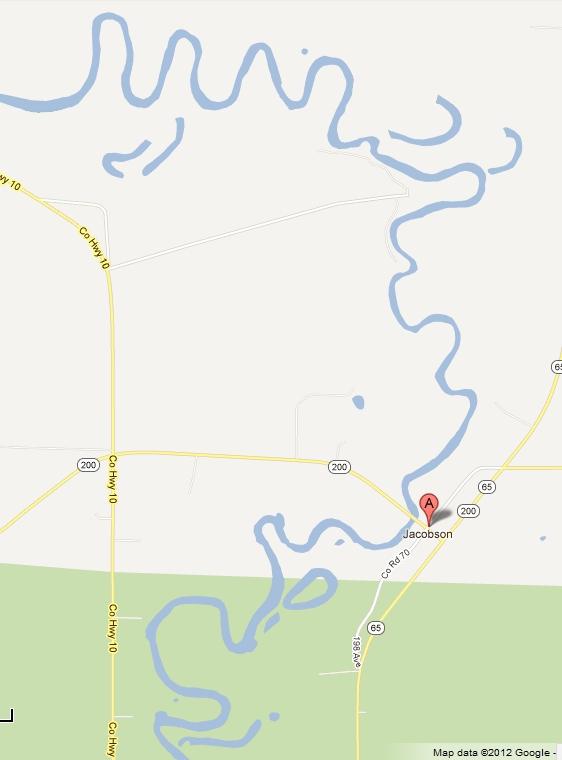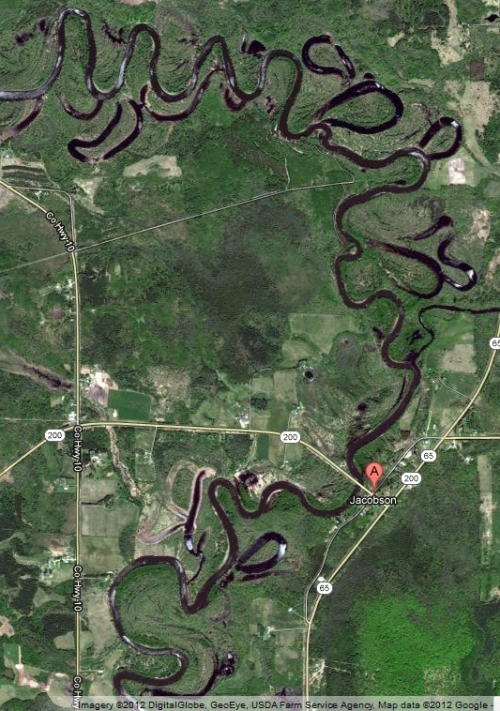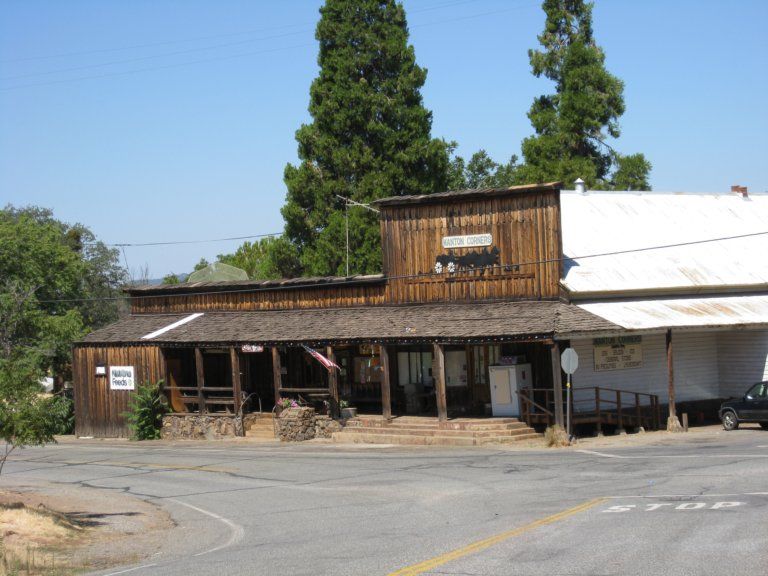Blue Highways: Jacobson, Minnesota
Unfolding the Map
We stop with William Least Heat-Moon (LHM) to skip rocks across the Mississippi. Rivers are life, rivers are powerful, rivers are death. Most of all, rivers are real and illusions at the same time. Read on to find out why. To find out where we cross the Mississippi this time (our fourth time in this journey), skip on over to the map.
Book Quote
"I came to the Mississippi again at Jacobson and stopped to get off the hot asphalt. The river was wider here, and it took me three attempts to shy a rock across. I walked up along the banks. The Mississippi, not a hundred water miles from its source, already flowed in olive murkiness."
Blue Highways: Part 7, Chapter 11
 Mississippi River near Jacobson, Minnesota. Photo by David Peterson and hosted at Panoramio. Click on photo to go to host site.
Mississippi River near Jacobson, Minnesota. Photo by David Peterson and hosted at Panoramio. Click on photo to go to host site.
Jacobson, Minnesota
When I was very young, and we used to go to our property on the Noyo River in Northern California, I always wondered why the water looked green.
The river in the summer was small, meandering over rock and sand through redwood forest, with alder and oak trees lining the bank. In sunlight, the river had an olive green look to it. The water, depending on the depth, could look a brownish green in the light shade to a deep, dark green in the shade. The water wasn't murky - in fact it was mostly clear so that rocks and objects on the river bottom could be seen quite easily, of course with a green hue.
It confused me because when I scooped the water out of the river, or got a bucketful, the water was clear like water should be. But in the river, it clearly didn't look like clear water. It had color, which gave it an otherness. I knew it was water, because it splashed and flowed like water should. But I wasn't quite sure, because it had that color. It was as if the river were something else entirely.
Of course, my Noyo River introduced me to illusion even though I didn't know it. Those of you reading will say "duh, Michael, the river bottom had that color and therefore the water looked like the same color. But at five, or six, or even seven years old I didn't understand that. All I knew is that water in the river looked different, and that it made a magical transformation into real water once you pulled it out of the river.
In fact, water is a master of illusion. Put a pencil in a glass of water and watch how the light refracts so that the pencil appears to bend or even be broken. Watch ocean water go from a bright blue in the midday sun to somber gray in the fog or under clouds, to mirrorlike glassiness on a calm day at sunset. Which is it? It's all three.
Water is probably the most powerful and destructive force we have on Earth. I listen to, and am comforted by, the soft pattern of rain. Yet that soft patter, if allowed to work for years or decades, will eventually find cracks in my ceiling, and entrances into my walls, and eventually ruin my house. The mightiest and hardest stone may stand unyielding for eons, but over the millenia it will change and erode because of the constant battering of water. We happily play in and splash water over each other, and yet water is a party to some of the most destructive occurrences on the planet. Flooding caused by incessant rain, especially in low lying areas, or storm surges driven ashore by hurricanes, or tsunamis forced up by an ocean floor earthquake.
Look at a river like the Mississippi. Not here, in Jacobson, Minnesota but farther down in Saint Louis or even New Orleans. The surface seems to flow along at a slow, steady pace. We have pictures in our mind, put there through literature, movies and television, of leisurely rafting along its surface. Yet beneath the surface raging currents boil. Logs are often sucked down, held under for a long time, and then suddenly come shooting to the surface, propelled by their own bouyancy and the river's forces. In New Orleans, it is madness to jump into the river. Many who have done so have disappeared, and only turned up miles downstream when the river decided to release its drowned captive from its cold embrace.
Water, in this way, is like a living thing with a mind of its own. The Mississippi, until the Army Corps of Engineers dredged, channelled, leveed and locked it, tended to move around like a snake in the grass. It would cut channels and happily flow by them for years or decades and then, suddenly overnight, break free through some weakness in the banks and cut a new channel. Sometimes its changes would take whole villages or towns from riverfront to landlocked property overnight. The mouth of the Mississippi has, throughout its history, moved from the Panhandle of Florida all the way over into Texas.
For example, look at this map picture of the Mississippi at Jacobson.

The map only hints at the wildness of the river. Sure, the river twists and turns because water finds the most accessible route downhill. There are some circles and some loops, called oxbow lakes, that don't appear to connect with the river. But look now at a satellite view. You can see what the map only hinted at.

This river has moved, a lot, in its past. Channels have been cut and abandoned, leaving loops unconnected with the river, old channels that are dry, and river passages that end nowhere. The system looks like a Gordian knot, or intertwining serpents.
The efforts of the Army Corps of Engineers currently keeps the Mississippi in its channel in its navigable length, but this is the elusive power of water and the river. The maintenance has to be continual. Water strains against all efforts to contain it. The bulk of the Mississippi wants to move and twist along its bulk just like its tail twists and turns near its source. Water may allow itself to be contained for a while, but eventually, water will always win. All our dams, levees, channels and locks, built to contain and tame the river, will eventually crumble away. All our efforts to control nature can only be temporary at best. Water knows us, inside and out. It is us, and because of this, it will always be more powerful than us.
Musical Interlude
A wonderful song about the Mississippi - or really any large river - written by Roger Miller for the musical Big River, based on the Adventures of Huckleberry Finn by Mark Twain.
If you want to know more about Jacobson
Lakes 'n' Woods: Jacobson
Rootsweb: Jacobson, Aitkin County
Wikipedia: Jacobson
Next up: Duluth, Minnesota




 Friday, March 2, 2012 at 5:52PM
Friday, March 2, 2012 at 5:52PM